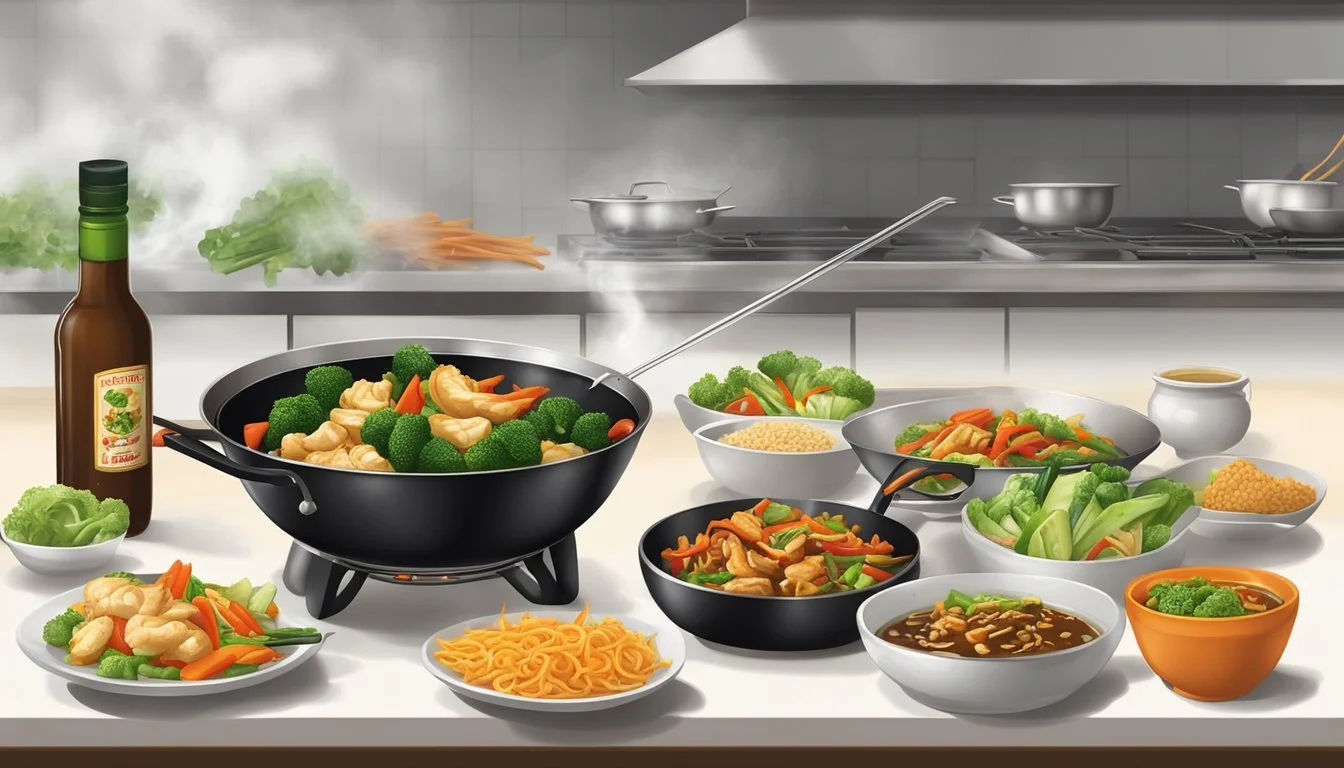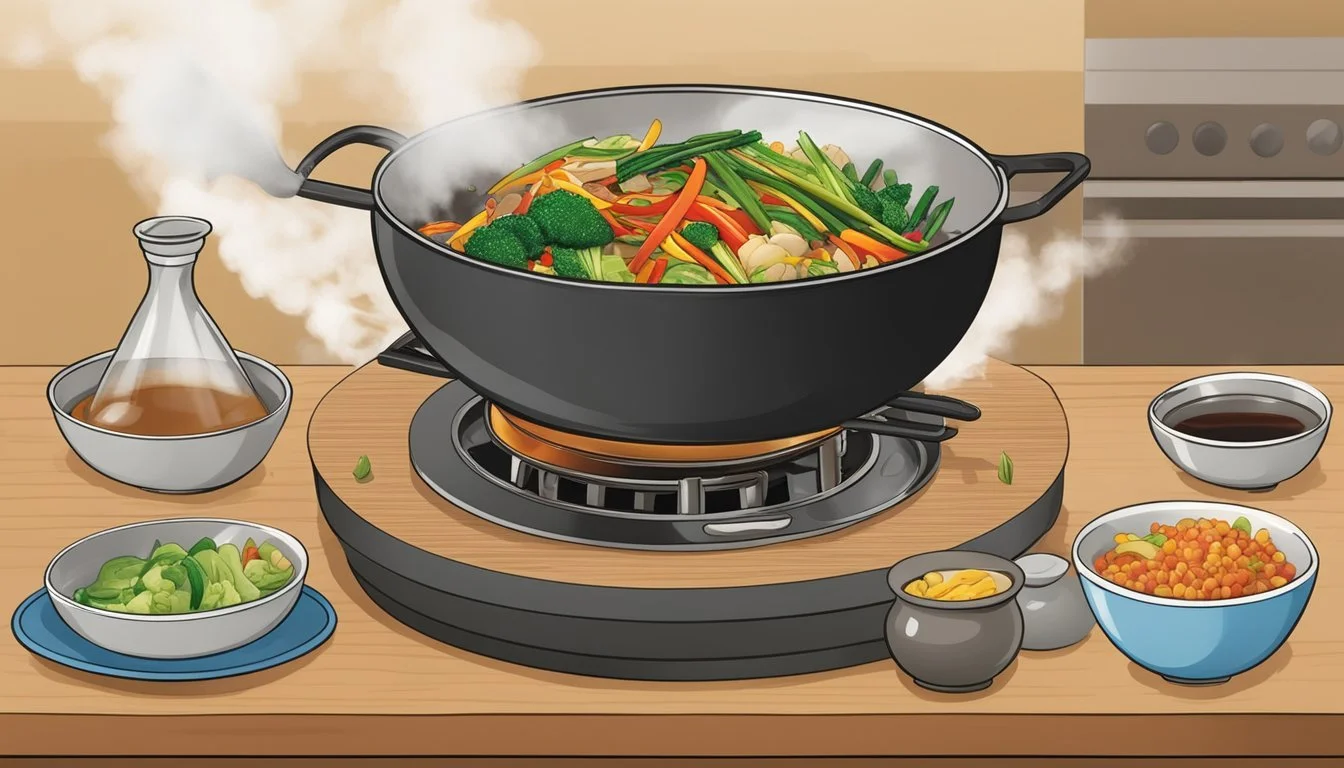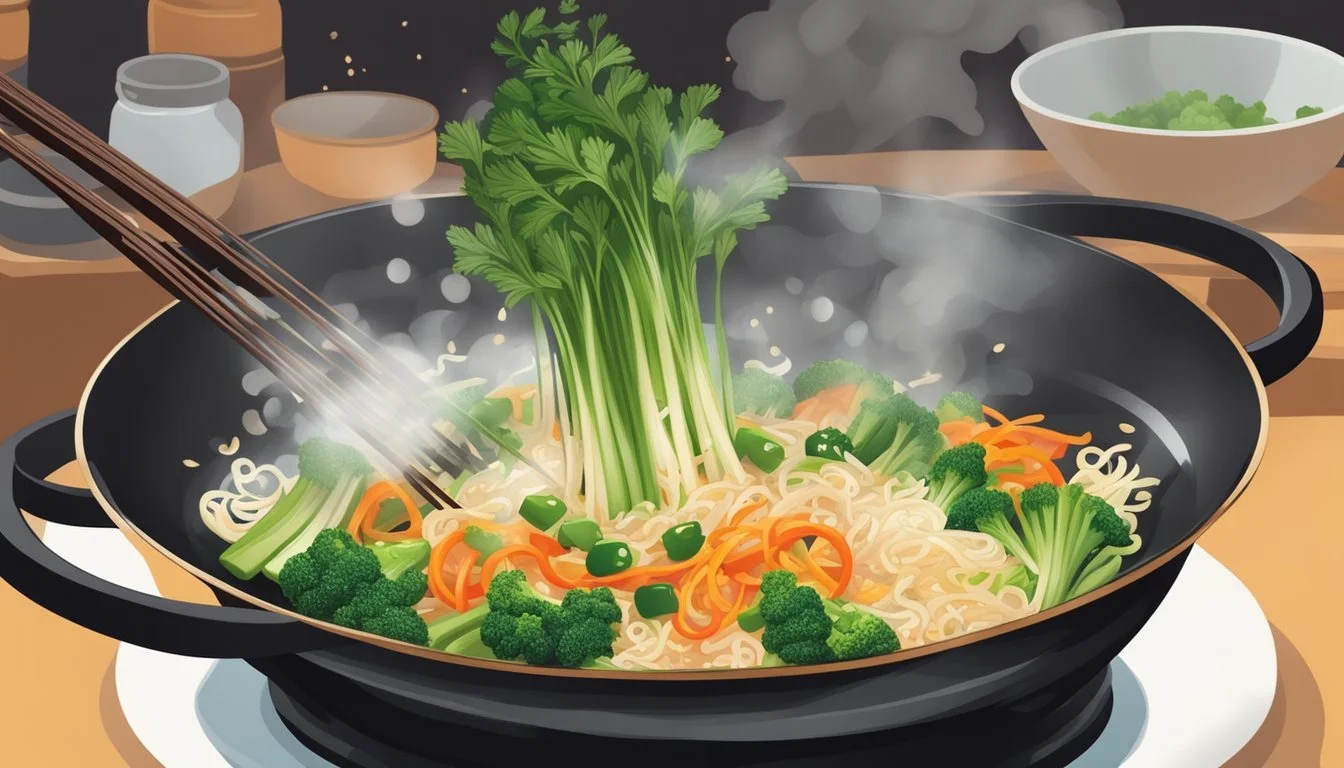How to Cook with La Choy Soy Sauce
Mastering Asian-Inspired Cuisine
Cooking with La Choy Soy Sauce offers an accessible way to incorporate Asian-inspired flavors into everyday meals. Soy sauce is a foundational ingredient in many Asian cuisines, valued for its rich umami taste that enhances the flavor profile of a dish. La Choy, a brand with a long-standing presence in American pantries, provides a soy sauce that is versatile for various cooking methods, whether it's stir-frying, marinating, or simply seasoning. Its balanced taste complements ingredients without overpowering them, making it an excellent choice for those aiming to create dishes with authentic Asian-inspired tastes.
The use of La Choy Soy Sauce in the kitchen is not limited to traditional Asian recipes. Its adaptability means it can be creatively used to add depth to a wide array of dishes. Home cooks often turn to La Choy Soy Sauce to elevate the taste of meat, vegetables, and rice, ensuring that every component of the meal is flavorful. The soy sauce works well in marinades, infusing proteins like chicken, pork, or beef with its distinctive flavor, or it can serve as a base for sauces and dressings that tie together various elements of a dish.
Beyond its primary purpose as a seasoning, La Choy Soy Sauce can be a key ingredient in inventive cooking, inspiring new culinary creations. As food enthusiasts embrace the fusion of different cuisines, this soy sauce becomes a useful tool to experiment with, allowing traditional flavors to meet new cooking techniques. With the growth of interest in cooking and expanding one's culinary repertoire, La Choy Soy Sauce stands out as a component that can assist in achieving the desired authenticity and taste of Asian-inspired dishes.
Discovering La Choy Soy Sauce
La Choy Soy Sauce is a staple condiment in the culinary world, especially for those who enjoy Asian-inspired dishes. It offers a distinctive taste that enhances the flavors of regular kitchen creations.
History and Brand
La Choy began its journey into American kitchens over a century ago, founded in 1922 by businessmen Wally Smith and Ilhan New. They aspired to make Asian-style cuisine accessible to American consumers. Today, La Choy is recognized as a member of the ConAgra Foods family, and it maintains a reputation for providing convenient, pantry-ready Asian ingredients. Their soy sauce acts as an essential foundation in many Asian-inspired recipes, allowing home cooks to incorporate authentic and savory umami flavors into their dishes efficiently.
Soy Sauce Varieties
La Choy Soy Sauce comes in different varieties, tailored to suit individual preferences and dietary needs:
Regular Soy Sauce: Their regular soy sauce imparts rich and savory flavor notes, perfect for marinades, stir-fries, or as a dipping sauce.
Low Sodium Options: For those monitoring their sodium intake, La Choy also offers a lower sodium alternative, allowing consumers to enjoy the same great taste with reduced salt content.
By integrating La Choy Soy Sauce into meal preparation, one can achieve the characteristically deep and complex flavors associated with Asian cuisine. It's a versatile addition to any kitchen pantry, inviting culinary enthusiasts to explore and create with confidence.
Essential Ingredients for Asian-Inspired Dishes
To masterfully create Asian-inspired dishes, a well-stocked pantry with the right balance of proteins, vegetables, aromatics, and condiments is crucial. These staples form the foundation for a myriad of recipes ranging from stir-fries to soups, providing depth and authenticity to each dish.
Proteins
Beef: Sliced thinly for quick cooking; used in stir-fries and bowls.
Chicken: Often diced or shredded; a versatile protein for a variety of dishes.
Pork: Adds richness, commonly found in dumplings and barbecued forms.
Each protein should be seasoned well, sometimes marinated with soy sauce and pepper, to enhance its flavor.
Vegetables
Bok Choy: Provides a crisp texture and a slightly bitter taste.
Broccoli: Adds a hearty element, often blanched or stir-fried.
Carrots: Bring color and sweetness, typically julienned or sliced.
Bell Peppers: Offer a subtle sweetness and crunch.
Snow Peas: Delicate and lightly sweet, delivering a satisfying snap.
These vegetables should be cut into uniform pieces for even cooking.
Aromatics
Garlic: Crushed or minced, it's essential for a fragrant base.
Green Onions: Used both as a garnish and for a mild onion flavor.
Onions: The backbone of countless recipes, providing sweetness and depth.
Ginger: Freshly grated or minced to impart warmth and a peppery taste.
Aromatics are typically sautéed early in the cooking process to release their flavors.
Additional Sauces and Oils
Soy Sauce: A fundamental seasoning for umami and saltiness.
Oyster Sauce: Adds a rich depth and slight sweetness to dishes.
Sesame Oil: Used sparingly for its intense flavor and nutty aroma.
Sesame Seeds: Often toasted and sprinkled on top for a nutty crunch.
These enhance the primary tastes of the dish and are often mixed together to create complex sauces.
Cooking Techniques with La Choy Soy Sauce
La Choy Soy Sauce is a versatile ingredient that enhances Asian-inspired dishes through a variety of cooking techniques, including its use in stir-frying, marinating, and sauce preparation. This section examines how one can employ La Choy Soy Sauce to create flavorful dishes.
Stir-Frying Basics
In stir-frying, a wok or skillet is essential. The technique involves cooking at high heat with a small amount of oil and continuous stirring. Here's how to leverage La Choy Soy Sauce in stir-frying:
Heat the wok to a high temperature before adding oil.
Add the ingredients in order of required cook time, starting with the ones that take longer to cook.
Pour in La Choy Soy Sauce towards the end of the cooking process to season and give the dish its signature Asian flavor.
Keep stirring rapidly to ensure even cooking and prevent burning.
Cooking Temp: Maintain a high heat to sear ingredients while preserving their texture.
Internal Temperature: Different ingredients will have their recommended internal temperatures to ensure they are cooked safely.
Marinating and Tenderizing
Marinating with La Choy Soy Sauce not only imparts flavor but also helps tenderize proteins such as chicken or beef. Follow these steps:
Combine La Choy Soy Sauce with other ingredients like garlic, ginger, or citrus to create a marinade.
Submerge the protein in the marinade and let it sit, refrigerated, for at least 30 minutes or up to overnight for deeper flavor.
Consider the protein's texture when determining marinating time—longer for tougher cuts and shorter for more delicate proteins.
Sauce Preparation
A good sauce can transform any dish. La Choy Soy Sauce serves as the perfect base:
Start by boiling any broth and then simmering to reduce the volume, concentrating the flavor.
Whisk in La Choy Soy Sauce and other seasonings like sugar or cornstarch-water mixture to thicken, balancing out the salty and sweet profiles.
Cook the sauce until it reaches the desired consistency, then set aside to accompany your Asian-inspired dish.
By incorporating these techniques with La Choy Soy Sauce, cooks can create a range of tasty and authentic dishes that boast the full spectrum of Asian-inspired flavors.
Classic and Creative Recipes
La Choy Soy Sauce serves as a versatile ingredient in a variety of recipes, from traditional stir-fries bursting with flavor to slow cooker dishes that allow for robust marination. Whether seeking the comfort of classic Asian flavors or experimenting with Asian fusion, the following recipes are tailored to enhace dinner with savory sauces and aromatic herbs.
Traditional Stir-Fry
A staple in Asian cuisine, the Traditional Stir-Fry incorporates a medley of crisp vegetables and tender meats. One may start with thinly sliced chicken breast or chicken thighs (What wine goes well with chicken thighs?), stir-frying them in a mix of La Choy Soy Sauce and rice wine vinegar until perfectly caramelized.
Ingredients:
1 lb chicken (breast or thighs), thinly sliced
2 cups assorted green vegetables (bell peppers, broccoli, snap peas)
2 tbsp La Choy Soy Sauce
1 tbsp rice wine vinegar
2 cloves garlic, minced
2 tsp olive oil
Cooked rice, for serving
Directions:
Heat olive oil in a large wok or skillet over medium-high heat.
Add chicken and garlic, cooking until the chicken is nearly cooked through.
Toss in green vegetables and stir-fry until tender-crisp.
Pour in La Choy Soy Sauce and rice wine vinegar, stirring until ingredients are well coated and flavorful.
Serve the stir-fry over a bed of fluffy rice.
Asian Fusion
In the Asian Fusion section, one finds innovation melding with tradition. An example is the delectable fusion of La Choy Soy Sauce with classic American dishes, like the Asian Beef and Rice Casserole. One can experiment with ingredients, such as adding fresh cilantro for an herbal punch or splash of orange juice for a hint of citrus.
Ingredients:
1 lb beef, cut into strips
2 cups cooked rice
1/4 cup La Choy Soy Sauce
Fresh cilantro, chopped (optional)
Orange juice (optional)
Crispy chow mein noodles
Directions:
Preheat the oven to 350°F (175°C).
In a skillet, cook beef strips until browned.
Mix cooked beef with cooked rice, La Choy Soy Sauce, and optional orange juice in a casserole dish.
Bake for 20 minutes. Garnish with fresh cilantro and top with crispy chow mein noodles before serving.
Slow Cooker Favorites
Lastly, the Slow Cooker Favorites highlight dishes that benefit from long, slow cooking, allowing La Choy Soy Sauce to penetrate deeply. Hearty meals such as a Savory Sauce Chicken is effortlessly prepared in the morning and savored by evening. Variations might include different proteins like tofu, adding a healthy twist without compromising on taste.
Ingredients:
1.5 lbs chicken breasts or thighs
1/4 cup La Choy Soy Sauce
1/4 cup chicken or vegetable broth
1 tbsp honey
Olive oil
Directions:
Brush chicken with olive oil and place in the slow cooker.
In a bowl, mix La Choy Soy Sauce, broth, and honey. Pour over the chicken.
Cook on low for 6-7 hours or on high for 3-4 hours until the chicken is tender.
Shred the chicken and serve with rice or as lettuce wraps with a sprinkle of fresh cilantro.
Perfecting Flavor and Presentation
When cooking with La Choy Soy Sauce, chefs pay keen attention to achieving a harmonious balance between flavors and providing a visually appealing presentation that makes every dish Instagram-worthy.
Balancing Sweet, Savory, and Tangy
A well-crafted dish engages multiple flavor profiles. Here are key considerations for balance:
Savory: The soy sauce provides the foundational umami and savory quality.
Sweet: Additives like brown sugar, honey, or a squeeze of orange juice can counteract the saltiness with their natural sweetness.
Tangy: To introduce a tangy element, a splash of rice vinegar or fresh squeezed oranges would fit perfectly.
To refine this balance, start with equal parts of savory and sweet, then adjust according to taste. If a dish needs more depth, ingredients like minced garlic or tamari can add complexity without overwhelming the other flavors.
Garnishing Techniques
A visually appealing dish not only tastes better but also enhances the dining experience. Here's how to garnish effectively:
Texture: Sprinkle toasted sesame seeds or thinly sliced green onions for a crunchy contrast.
Color: Bright ingredients like green cilantro or red cayenne pepper flakes add a pop of color.
Flavor: Garnishes should complement the dish's flavor profile; green onions add freshness, cilantro contributes a light citrus note, and cayenne pepper introduces a mild heat.
To garnish strategically, place the ingredients deliberately on the dish for maximum visual impact. Chefs should consider the colors of the garnish and how they interact visually with the main components of the dish.
Cooking Tips and Tricks
When incorporating La Choy Soy Sauce into Asian-inspired dishes, chefs optimize flavor and presentation with careful attention to cook time, seasoning adjustments, and visual appeal.
Adjusting Cook Time
To yield the most flavorful outcome, proteins such as juicy chicken or beef should be marinated for at least 30 minutes with La Choy Soy Sauce, potentially extended to overnight for deeper infusion. When cooking leafy vegetables like baby bok choy, a rapid sauté over high heat helps retain a vibrant color and a satisfying crunch. It is essential not to overcook proteins or vegetables to maintain their healthy qualities and textures.
Enhancing with Seasonings
An ideal seasoning mixture might include La Choy Soy Sauce, rice wine vinegar, and a touch of brown sugar to balance the flavors. Mix these ingredients in a small bowl to ensure even distribution. Marinating proteins or tossing them midway through cooking can deepen the taste profile. When stir-frying, a drizzle of vegetable oil in the pan can prevent sticking while allowing the seasonings to coat evenly.
Marinade Mixture Example:
1/4 cup La Choy Soy Sauce
2 tbsp rice wine
1 tbsp brown sugar
2 tsp rice wine vinegar
Presentation Ideas
Serve dishes on a bed of white rice to anchor the presentation while soaking up the savory sauces. Garnish with thinly sliced green onions or sesame seeds to add texture and visual contrast. For dishes that are particularly photogenic, sharing on platforms like Instagram can invite engagement and showcase the chef's skills with Asian-inspired cuisine. Use serving ware that complements the dish's aesthetic to make every meal a visual feast as well as a culinary one.
Health and Dietary Considerations
When cooking with La Choy Soy Sauce, it's essential to consider dietary needs such as sodium intake, gluten content, and vegetarian or vegan requirements. Adapting recipes to meet these needs can help maintain the savory quality of a dish while also being inclusive of various health and diet preferences.
Low-Sodium Options
La Choy offers a low-sodium version of their soy sauce, providing a healthier alternative for those monitoring their sodium intake. To further reduce sodium:
Use half the suggested amount of soy sauce and substitute the rest with broth or water.
Enhance flavors with herbs and spices such as ginger or garlic instead of adding extra sauce.
Gluten-Free Cooking
Tamari is a gluten-free alternative to traditional soy sauce and delivers a similar rich, savory flavor suitable for those with gluten sensitivities. When using La Choy Soy Sauce in recipes:
Confirm that it's labeled "gluten-free"; not all soy sauces are.
For strict gluten-free cooking, cross-contamination should be avoided by preparing dishes using separate utensils and cookware.
Vegetarian and Vegan Alternatives
For vegetarian and vegan dishes where umami flavor is vital, La Choy Soy Sauce can serve as a seasoning for tofu, imparting a savory taste that complements a variety of ingredients. In addition:
A slow cooker can be utilized to infuse tofu and vegetables with soy sauce, deepening the flavors over long cooking periods.
Include a variety of vegetables and protein alternatives like tempeh or seitan (What wine goes well with seitan?) to create balanced and nutritious meals.
Where to Buy and How to Store
La Choy Soy Sauce can be easily purchased for adding Asian flavor to a variety of dishes, and it should be stored properly to maintain its quality and extend its shelf life.
Shopping Guide for Ingredients
La Choy Soy Sauce is widely available and can be found in most supermarkets and grocery stores. One can also purchase it online through various retailers. Its availability in different sizes, such as 10 oz. and 15 oz. bottles, allows consumers to buy according to their needs.
Locations to Purchase La Choy Soy Sauce:
Grocery stores
Supermarkets
Online retailers
When shopping for Asian ingredients to complement the soy sauce, look for freshness and quality, ensuring the best flavor for your dishes.
Preservation and Shelf Life
Once purchased, La Choy Soy Sauce does not require refrigeration and can be stored at room temperature, thanks to its high sodium content that acts as a preservative. The soy sauce's shelf life is quite long due to the fermentation process it undergoes, and it is generally safe to use past the printed expiration date if stored correctly.
Proper Storage Guidelines:
Store in a cool, dry place away from direct sunlight.
Keep the bottle tightly sealed when not in use.
No refrigeration is necessary before or after opening.
By following these storage tips, La Choy Soy Sauce will maintain its quality and provide that essential Asian flavor to all your dishes.







